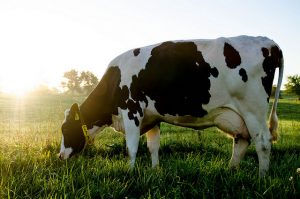TUESDAY, 21 MARCH 2017
“If we fail on food, we fail on everything,” said Charles Godfray in a paper five years ago, addressing concerns over food production and security. Throughout history, being able to sustain a growing population has been at the forefront of the minds of philosophers, politicians and scientists alike. We have always managed to find a way to feed the population, staving off the problem for a couple of decades, but today the problem rears its ugly head yet again, and is more threatening than ever. Unfortunately, the world is a finite place – and the problem is, we’re running out of space.In fact, that’s not quite true. It has been calculated that we could happily survive and thrive with a population of 3 billion more than today, as is predicted for 2050, without increasing the amount of agricultural land by a single hectare. But for the land use to stay the same, something else must give – and that something is our diets.
With one billion people going hungry every day, it is clear that our current method of food production is fraught with difficulties. Many of these problems are complex and politically charged, yet one factor that is overlooked so often lies not in the hands of the powers that be but with citizens themselves: the choice of what we eat.
At the crux of the matter is a basic question of energy transfer. At every stage of a food chain energy is lost, in concordance with the Second Law of Thermodynamics, whether through heat, gas emissions or excretion. In fact for many organisms energy transfer can be remarkably inefficient. Let’s have a look at the domestic cow, and how its attributes affect its efficiency as a consumer.
 Image: CAFNR
Image: CAFNRSo only a sixth of the food given to beef cattle is converted into anything useful: meat for consumption. Although naturally feeding on grasses, most cattle feed nowadays is made up of grains, which allow the animals to build body mass faster. However, most of these grains – corn, barley and soybeans – are also fit for human consumption. When a billion people (a seventh of the world’s population) are going hungry, can we justify deliberately diverting this food elsewhere, when so little of the energy is preserved and much goes on to cause environmental harm? Of course, it’s not quite as simple as that. Meat has different nutritional qualities to grains, especially in terms of protein content. But as has been observed the world over for millennia, notably in the Indian subcontinent, beef – or any meat – is by no means an essential component of one’s diet.
"With one billion people going hungry every day, it is clear that our current method of food production is fraught with difficulties"
The inefficiencies do not stop at biomass conversion. Grazing land takes up over a quarter of all the ice-free land on Earth. In addition, growing the grains used to feed livestock occupies a third of all arable land. The Food and Agricultural Organisation (FAO) reports that, “Ranching-induced deforestation is one of the main causes of loss of some unique plant and animal species in the tropical rainforests of Central and South America as well as carbon release in the atmosphere.” The chief irony of this is that the land is only usable for a handful of years anyway, as the vast majority of nutrients in a rainforest system exist as biomass (in other words: the trees), and this is removed when the land is cleared, and the remainder is rapidly consumed by the grazing cattle.
The FAO statement also raises another, less obvious but far more insidious, point. Livestock are estimated to be responsible for a seventh of all anthropogenic greenhouse gas emissions. The most direct cause for this staggering statistic is from methane release from the cows themselves. Anaerobic bacteria within their stomachs produce this potent greenhouse gas, which is then expelled by belching. But there exists a huge amount of other indirect emissions: the growing and transportation of feedstock, the release of sequestered carbon via deforestation, the refrigeration and transportation of the end-products, all of which are powerful contributors to climate change.
Whilst people can debate about the ethics of livestock farming and slaughter till the cows come home, few will argue against attempting to prevent human suffering. And in a more and more crowded world, the way we eat affects more and more people. As consumers, we can be incredibly powerful, and one pivotal way in which we can affect demand is through what we choose to eat. There remain barriers, not least the cultural predilection for a meaty diet, but health organizations tend to be unanimous in pointing out that Western societies tend to eat far more meat than is good for them. It all boils down to a matter of efficiency, and nobody would disagree that as a global society, we will have to become hugely more efficient in order to continue existing. Godfray’s provocative statement is perhaps best perceived as a challenge, and one that we are more than capable of rising to.
Featured image: Feed My Starving Children (FMSC)
